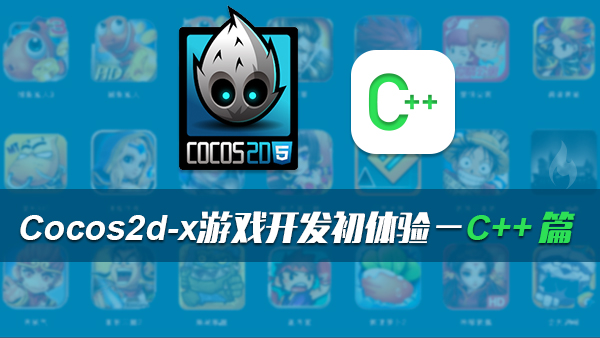本文提供了C++11项目实战的全面指南,从基础语法到高级特性,介绍了数据类型、运算符、控制结构和函数等关键概念。文章还详细讲解了函数和对象的基本概念,并深入介绍了C++11的高级语法特性,如智能指针、模板和标准库的使用。最后,通过一个简单的图书管理系统项目,展示了如何进行项目设计、代码组织和调试,帮助读者掌握C++11项目实战技能。
C++11项目实战:从入门到初级应用教程 C++11基础语法入门数据类型和变量声明
C++是一种静态类型语言,因此在声明变量时,需要指定变量的数据类型。以下是C++中常用的数据类型:
int:整数类型,通常用于存储整数数据。float:单精度浮点数类型,用于存储小数。double:双精度浮点数类型,用于存储更高的精度小数。char:字符类型,通常用于存储单个字符。bool:布尔类型,只能取值为true或false。
以下是一些示例代码,展示了如何声明和初始化不同类型的变量:
#include <iostream>
int main() {
int integer = 10;
float floating = 3.14f;
double doublePrecision = 2.718281828;
char character = 'a';
bool boolean = true;
std::cout << "Integer: " << integer << std::endl;
std::cout << "Floating: " << floating << std::endl;
std::cout << "Double Precision: " << doublePrecision << std::endl;
std::cout << "Character: " << character << std::endl;
std::cout << "Boolean: " << boolean << std::endl;
return 0;
}基本运算符
C++支持多种基本运算符,包括算术运算符、关系运算符、逻辑运算符等。
- 算术运算符:
+、-、*、/、%。 - 关系运算符:
==、!=、>、<、>=、<=。 - 逻辑运算符:
&&、||、!。
以下是一些示例代码,展示了如何使用这些运算符:
#include <iostream>
int main() {
int a = 5;
int b = 3;
// 算术运算符
std::cout << "a + b = " << a + b << std::endl;
std::cout << "a - b = " << a - b << std::endl;
std::cout << "a * b = " << a * b << std::endl;
std::cout << "a / b = " << a / b << std::endl;
std::cout << "a % b = " << a % b << std::endl;
// 关系运算符
std::cout << "a == b: " << (a == b) << std::endl;
std::cout << "a != b: " << (a != b) << std::endl;
std::cout << "a > b: " << (a > b) << std::endl;
std::cout << "a < b: " << (a < b) << std::endl;
std::cout << "a >= b: " << (a >= b) << std::endl;
std::cout << "a <= b: " << (a <= b) << std::endl;
// 逻辑运算符
std::cout << "a < b && a != b: " << (a < b && a != b) << std::endl;
std::cout << "a > b || a == b: " << (a > b || a == b) << std::endl;
std::cout << "!(a > b): " << !(a > b) << std::endl;
return 0;
}控制结构
if 语句
if语句用于根据条件执行代码块。以下是一个简单的if语句示例:
#include <iostream>
int main() {
int age = 18;
if (age >= 18) {
std::cout << "You are an adult." << std::endl;
} else {
std::cout << "You are not an adult." << std::endl;
}
return 0;
}switch 语句
switch语句用于根据不同的条件执行不同的代码块。以下是一个简单的switch语句示例:
#include <iostream>
int main() {
int dayOfWeek = 2;
switch (dayOfWeek) {
case 1:
std::cout << "Monday" << std::endl;
break;
case 2:
std::cout << "Tuesday" << std::endl;
break;
case 3:
std::cout << "Wednesday" << std::endl;
break;
case 4:
std::cout << "Thursday" << std::endl;
break;
case 5:
std::cout << "Friday" << std::endl;
break;
case 6:
std::cout << "Saturday" << std::endl;
break;
case 7:
std::cout << "Sunday" << std::endl;
break;
default:
std::cout << "Invalid day" << std::endl;
break;
}
return 0;
}循环结构
for 循环
for循环用于执行一定次数的循环。以下是一个简单的for循环示例:
#include <iostream>
int main() {
for (int i = 0; i < 5; i++) {
std::cout << "Iteration " << i << std::endl;
}
return 0;
}while 循环
while循环用于在条件为真时执行循环。以下是一个简单的while循环示例:
#include <iostream>
int main() {
int i = 0;
while (i < 5) {
std::cout << "Iteration " << i << std::endl;
i++;
}
return 0;
}do-while 循环
do-while循环用于至少执行一次循环,然后在每次循环后检查条件。以下是一个简单的do-while循环示例:
#include <iostream>
int main() {
int i = 0;
do {
std::cout << "Iteration " << i << std::endl;
i++;
} while (i < 5);
return 0;
}函数定义和调用
函数是可重用的代码块,可以接受参数并返回值。定义函数的基本语法如下:
returnType functionName(parameters) {
// 函数体
return value;
}以下是一个简单的函数定义和调用示例:
#include <iostream>
int add(int a, int b) {
return a + b;
}
int main() {
int result = add(3, 5);
std::cout << "Result: " << result << std::endl;
return 0;
}函数参数和返回值
函数可以通过参数接受传入的值,并通过返回值返回结果。以下是带有参数和返回值的函数示例:
#include <iostream>
int multiply(int a, int b) {
return a * b;
}
int main() {
int result = multiply(3, 5);
std::cout << "Result: " << result << std::endl;
return 0;
}类和对象的基本概念
C++中的类是一种用户自定义的数据类型,用于封装数据和相关的操作。定义类的基本语法如下:
class ClassName {
public:
// 构造函数
ClassName() {}
// 成员函数
void memberFunction() {
// 函数体
}
};以下是一个简单的类和对象的示例:
#include <iostream>
class Point {
public:
int x;
int y;
Point(int x, int y) : x(x), y(y) {}
void print() {
std::cout << "Point (" << x << ", " << y << ")" << std::endl;
}
};
int main() {
Point p(3, 5);
p.print();
return 0;
}成员函数和访问修饰符
类中的成员函数可以通过访问修饰符来控制其访问权限。常见的访问修饰符有public、private和protected。
public:可以在类外部访问。private:只能在类内部访问。protected:只能在类及其派生类中访问。
以下是一个示例,展示了不同访问修饰符的使用:
#include <iostream>
class PrivateClass {
private:
int privateData;
public:
PrivateClass(int data) : privateData(data) {}
void setPrivate(int data) {
privateData = data;
}
int getPrivate() const {
return privateData;
}
};
int main() {
PrivateClass pc(10);
pc.setPrivate(20);
std::cout << "Private data: " << pc.getPrivate() << std::endl;
return 0;
}智能指针
智能指针是一种自动管理内存的类,可以避免常见的内存泄漏问题。常见的智能指针有std::unique_ptr和std::shared_ptr。
std::unique_ptr:独占所有权,不能被复制。std::shared_ptr:共享所有权,可以被复制。
以下是一些示例代码,展示了如何使用智能指针:
#include <iostream>
#include <memory>
void useUniquePtr() {
std::unique_ptr<int> ptr(new int(10));
std::cout << "Unique ptr value: " << *ptr << std::endl;
}
void useSharedPtr() {
std::shared_ptr<int> ptr(new int(20));
std::cout << "Shared ptr value: " << *ptr << std::endl;
}
int main() {
useUniquePtr();
useSharedPtr();
return 0;
}引用和引用参数
引用是变量的别名,可以用来传递函数参数。通过引用参数,可以在函数内部修改原始变量。
以下是一个示例,展示了如何使用引用参数:
#include <iostream>
void increment(int& num) {
num++;
}
int main() {
int num = 10;
increment(num);
std::cout << "Number after increment: " << num << std::endl;
return 0;
}常量和枚举
常量是一种不可修改的数据,通常用于定义固定的值。枚举是一种类型,用于定义一组常量。
以下是一些示例代码,展示了如何使用常量和枚举:
#include <iostream>
const int MAX_SIZE = 100;
enum Color { RED, GREEN, BLUE };
int main() {
std::cout << "Max size: " << MAX_SIZE << std::endl;
std::cout << "Color red: " << RED << std::endl;
return 0;
}命名空间
命名空间用于组织代码,避免命名冲突。以下是一些示例代码,展示了如何使用命名空间:
#include <iostream>
namespace MyNamespace {
const int MY_CONSTANT = 10;
void printMessage() {
std::cout << "Hello from MyNamespace" << std::endl;
}
}
int main() {
std::cout << "Constant from MyNamespace: " << MyNamespace::MY_CONSTANT << std::endl;
MyNamespace::printMessage();
return 0;
}常用容器
C++标准库提供了多种容器,用于存储和操作数据。常见的容器有std::vector、std::list、std::map等。
std::vector:动态数组,支持随机访问。std::list:双向链表,支持高效的插入和删除操作。std::map:关联容器,使用键值对存储数据。
以下是一些示例代码,展示了如何使用这些容器:
#include <iostream>
#include <vector>
#include <list>
#include <map>
int main() {
// vector 示例
std::vector<int> vec = {1, 2, 3, 4, 5};
for (int i : vec) {
std::cout << i << " ";
}
std::cout << std::endl;
// list 示例
std::list<int> lst = {10, 20, 30, 40, 50};
for (int i : lst) {
std::cout << i << " ";
}
std::cout << std::endl;
// map 示例
std::map<std::string, int> map = {{"One", 1}, {"Two", 2}, {"Three", 3}};
for (const auto& pair : map) {
std::cout << pair.first << ": " << pair.second << std::endl;
}
return 0;
}常用算法
C++标准库提供了许多算法,用于处理容器中的数据。常见的算法有std::sort、std::find等。
std::sort:用于排序容器中的元素。std::find:用于查找容器中的元素。
以下是一些示例代码,展示了如何使用这些算法:
#include <iostream>
#include <vector>
#include <algorithm>
int main() {
std::vector<int> vec = {5, 2, 8, 1, 9};
// 使用 std::sort 排序
std::sort(vec.begin(), vec.end());
for (int i : vec) {
std::cout << i << " ";
}
std::cout << std::endl;
// 使用 std::find 查找元素
auto it = std::find(vec.begin(), vec.end(), 8);
if (it != vec.end()) {
std::cout << "Found value: " << *it << std::endl;
} else {
std::cout << "Value not found" << std::endl;
}
return 0;
}输入输出流
C++提供了std::cin和std::cout等流对象,用于处理输入输出操作。
以下是一些示例代码,展示了如何使用输入输出流:
#include <iostream>
int main() {
int number;
std::cout << "Enter a number: ";
std::cin >> number;
std::cout << "You entered: " << number << std::endl;
return 0;
}项目设计和规划
在开始一个C++项目之前,需要进行详细的规划和设计。这包括确定项目的目标、功能需求、模块划分等。以下是一个简单的项目设计示例:
项目目标
开发一个简单的图书管理系统,用于记录图书的借阅情况。
功能需求
- 添加新图书信息
- 查找图书信息
- 借阅图书
- 归还图书
- 显示所有图书信息
模块划分
- 数据存储模块:管理图书信息的存储和检索。
- 用户交互模块:处理用户的输入和输出。
- 业务逻辑模块:实现图书管理的各种功能。
项目设计和规划
以下是一个简单的图书管理系统项目设计的代码示例:
// 数据存储模块
#include <vector>
#include <string>
struct Book {
std::string title;
std::string author;
bool borrowed;
};
class DataStorage {
public:
void addBook(const Book& book);
bool findBook(const std::string& title, Book& book);
void borrowBook(const std::string& title);
void returnBook(const std::string& title);
void displayAllBooks() const;
private:
std::vector<Book> books;
};
void DataStorage::addBook(const Book& book) {
books.push_back(book);
}
bool DataStorage::findBook(const std::string& title, Book& book) {
for (auto& b : books) {
if (b.title == title) {
book = b;
return true;
}
}
return false;
}
void DataStorage::borrowBook(const std::string& title) {
for (auto& b : books) {
if (b.title == title) {
b.borrowed = true;
return;
}
}
}
void DataStorage::returnBook(const std::string& title) {
for (auto& b : books) {
if (b.title == title) {
b.borrowed = false;
return;
}
}
}
void DataStorage::displayAllBooks() const {
for (const auto& b : books) {
std::cout << "Title: " << b.title << ", Author: " << b.author << ", Borrowed: " << b.borrowed << std::endl;
}
}
// 用户交互模块
#include <iostream>
#include "data_storage.h"
void addBookInteraction(DataStorage& storage) {
std::string title, author;
std::cout << "Enter book title: ";
std::cin >> title;
std::cout << "Enter book author: ";
std::cin >> author;
storage.addBook({title, author, false});
}
void findBookInteraction(DataStorage& storage) {
std::string title;
std::cout << "Enter book title to find: ";
std::cin >> title;
Book book;
if (storage.findBook(title, book)) {
std::cout << "Found book: " << book.title << " by " << book.author << std::endl;
} else {
std::cout << "Book not found" << std::endl;
}
}
void borrowBookInteraction(DataStorage& storage) {
std::string title;
std::cout << "Enter book title to borrow: ";
std::cin >> title;
storage.borrowBook(title);
}
void returnBookInteraction(DataStorage& storage) {
std::string title;
std::cout << "Enter book title to return: ";
std::cin >> title;
storage.returnBook(title);
}
void displayAllBooksInteraction(DataStorage& storage) {
storage.displayAllBooks();
}
// 业务逻辑模块
#include <iostream>
#include "user_interaction.h"
void runLibrarySystem() {
DataStorage storage;
while (true) {
std::cout << "1. Add book\n2. Find book\n3. Borrow book\n4. Return book\n5. Display all books\n6. Exit\n";
int choice;
std::cin >> choice;
switch (choice) {
case 1:
addBookInteraction(storage);
break;
case 2:
findBookInteraction(storage);
break;
case 3:
borrowBookInteraction(storage);
break;
case 4:
returnBookInteraction(storage);
break;
case 5:
displayAllBooksInteraction(storage);
break;
case 6:
return;
default:
std::cout << "Invalid choice" << std::endl;
}
}
}
// 主程序
#include "business_logic.h"
int main() {
runLibrarySystem();
return 0;
}代码组织和模块划分
一个好的项目结构应该清晰且易于维护。通常,一个项目会被划分为多个模块,每个模块负责实现特定的功能。以下是一个简单的项目结构示例:
project/
├── include/
│ ├── data_storage.h
│ ├── user_interaction.h
│ └── business_logic.h
├── src/
│ ├── data_storage.cpp
│ ├── user_interaction.cpp
│ └── business_logic.cpp
└── main.cpp每个模块的代码应该遵循单一职责原则,专注于实现一个特定的功能。
实际代码编写和调试
以下是一个简单的图书管理系统的示例代码:
// data_storage.h
#ifndef DATA_STORAGE_H
#define DATA_STORAGE_H
#include <vector>
#include <string>
struct Book {
std::string title;
std::string author;
bool borrowed;
};
class DataStorage {
public:
void addBook(const Book& book);
bool findBook(const std::string& title, Book& book);
void borrowBook(const std::string& title);
void returnBook(const std::string& title);
void displayAllBooks() const;
private:
std::vector<Book> books;
};
#endif
// data_storage.cpp
#include "data_storage.h"
void DataStorage::addBook(const Book& book) {
books.push_back(book);
}
bool DataStorage::findBook(const std::string& title, Book& book) {
for (auto& b : books) {
if (b.title == title) {
book = b;
return true;
}
}
return false;
}
void DataStorage::borrowBook(const std::string& title) {
for (auto& b : books) {
if (b.title == title) {
b.borrowed = true;
return;
}
}
}
void DataStorage::returnBook(const std::string& title) {
for (auto& b : books) {
if (b.title == title) {
b.borrowed = false;
return;
}
}
}
void DataStorage::displayAllBooks() const {
for (const auto& b : books) {
std::cout << "Title: " << b.title << ", Author: " << b.author << ", Borrowed: " << b.borrowed << std::endl;
}
}
// user_interaction.h
#ifndef USER_INTERACTION_H
#define USER_INTERACTION_H
#include <iostream>
#include "data_storage.h"
void addBookInteraction(DataStorage& storage);
void findBookInteraction(DataStorage& storage);
void borrowBookInteraction(DataStorage& storage);
void returnBookInteraction(DataStorage& storage);
void displayAllBooksInteraction(DataStorage& storage);
#endif
// user_interaction.cpp
#include "user_interaction.h"
void addBookInteraction(DataStorage& storage) {
std::string title, author;
std::cout << "Enter book title: ";
std::cin >> title;
std::cout << "Enter book author: ";
std::cin >> author;
storage.addBook({title, author, false});
}
void findBookInteraction(DataStorage& storage) {
std::string title;
std::cout << "Enter book title to find: ";
std::cin >> title;
Book book;
if (storage.findBook(title, book)) {
std::cout << "Found book: " << book.title << " by " << book.author << std::endl;
} else {
std::cout << "Book not found" << std::endl;
}
}
void borrowBookInteraction(DataStorage& storage) {
std::string title;
std::cout << "Enter book title to borrow: ";
std::cin >> title;
storage.borrowBook(title);
}
void returnBookInteraction(DataStorage& storage) {
std::string title;
std::cout << "Enter book title to return: ";
std::cin >> title;
storage.returnBook(title);
}
void displayAllBooksInteraction(DataStorage& storage) {
storage.displayAllBooks();
}
// business_logic.h
#ifndef BUSINESS_LOGIC_H
#define BUSINESS_LOGIC_H
#include <iostream>
#include "user_interaction.h"
void runLibrarySystem();
#endif
// business_logic.cpp
#include "business_logic.h"
void runLibrarySystem() {
DataStorage storage;
while (true) {
std::cout << "1. Add book\n2. Find book\n3. Borrow book\n4. Return book\n5. Display all books\n6. Exit\n";
int choice;
std::cin >> choice;
switch (choice) {
case 1:
addBookInteraction(storage);
break;
case 2:
findBookInteraction(storage);
break;
case 3:
borrowBookInteraction(storage);
break;
case 4:
returnBookInteraction(storage);
break;
case 5:
displayAllBooksInteraction(storage);
break;
case 6:
return;
default:
std::cout << "Invalid choice" << std::endl;
}
}
}
// main.cpp
#include "business_logic.h"
int main() {
runLibrarySystem();
return 0;
}项目部署和运行
完成代码编写后,需要将项目部署到服务器或本地环境中进行测试和运行。根据项目需求,可以选择不同的部署方式,如使用容器化技术(如Docker)或云服务(如AWS、Google Cloud)。
以下是一个简单的部署步骤:
- 编译项目:使用C++编译器(如g++)编译项目代码。
- 执行程序:运行编译后的可执行文件。
- 测试功能:确保所有功能按预期工作。
- 部署:将程序部署到目标环境。
调试技巧和示例
常见错误和解决方法
在C++编程中,常见的错误包括语法错误、逻辑错误和运行时错误。以下是一些常见的错误及其解决方法:
语法错误
- 错误:编译器报错,如缺失分号、括号不匹配等。
- 解决方法:检查代码语法,确保正确使用分号、括号等。
逻辑错误
- 错误:程序逻辑错误,导致程序输出不符合预期。
- 解决方法:仔细检查代码逻辑,确保逻辑正确。
运行时错误
- 错误:程序运行时出现错误,如内存泄漏、数组越界等。
- 解决方法:使用调试工具(如GDB)进行调试,检查内存使用情况。
调试工具使用
调试工具可以帮助开发者定位和解决程序中的错误。常用的调试工具有GDB、Visual Studio Debugger等。
以下是一些使用GDB的基本步骤:
- 编译程序时打开调试信息:使用
g++ -g编译程序。 - 使用GDB启动程序:使用
gdb a.out启动GDB。 - 设置断点:使用
break命令设置断点。 - 单步执行:使用
step命令单步执行代码。 - 查看变量值:使用
print命令查看变量值。
代码优化建议
优化代码可以提高程序的性能和可读性。以下是一些代码优化建议:
减少内存分配
- 避免频繁的动态内存分配,使用栈内存或静态内存。
- 使用智能指针管理内存,避免内存泄漏。
使用合适的数据结构
- 根据实际需求选择合适的数据结构,如使用
std::vector而非std::list。
避免不必要的计算
- 尽量避免重复计算,使用缓存或中间变量存储计算结果。
代码重构
- 重构代码,使其更简洁、易读。
通过遵循这些优化建议,可以有效地提高代码质量和性能。

 随时随地看视频
随时随地看视频




